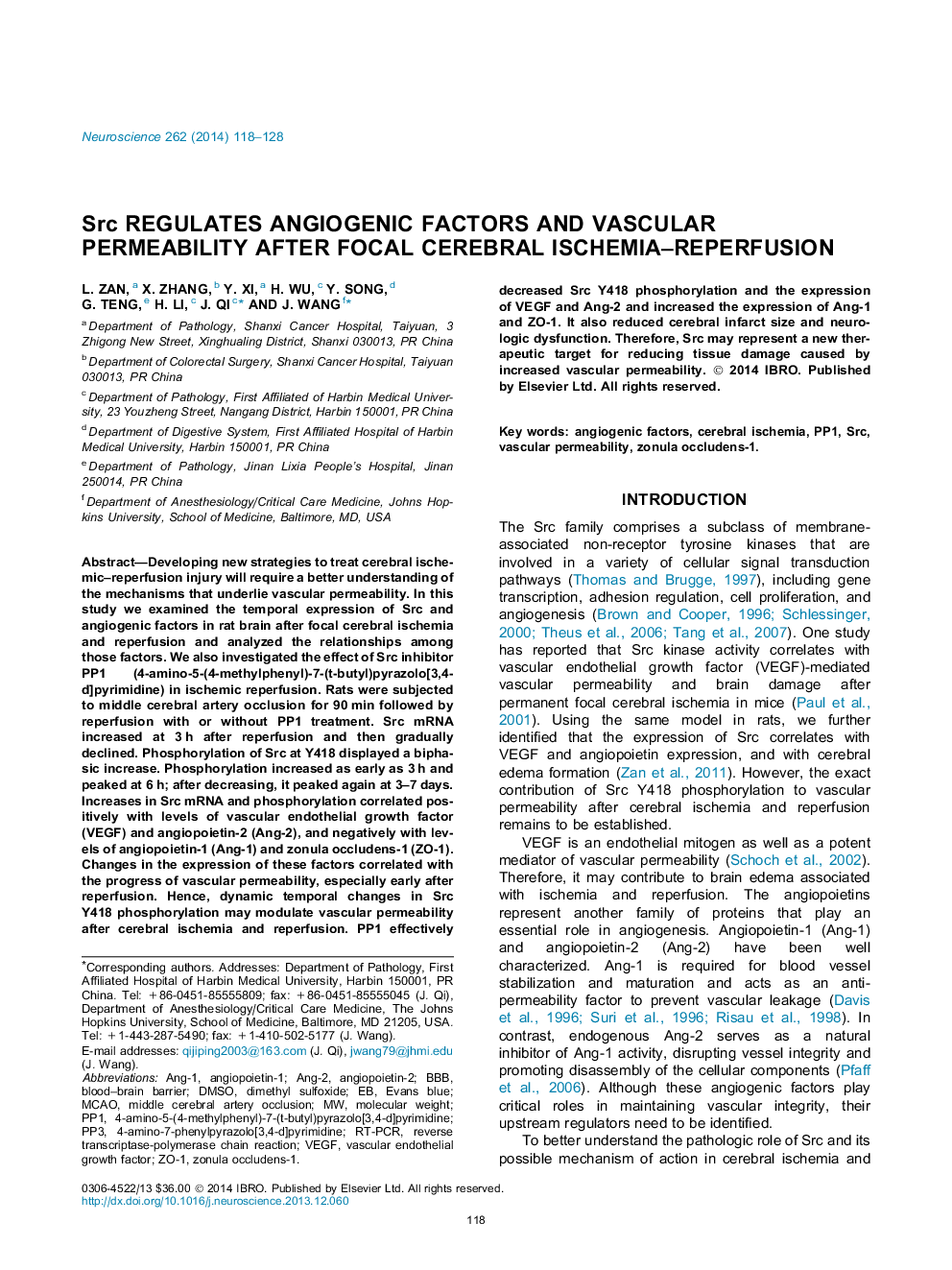| Article ID | Journal | Published Year | Pages | File Type |
|---|---|---|---|---|
| 6274055 | Neuroscience | 2014 | 11 Pages |
Abstract
Developing new strategies to treat cerebral ischemic-reperfusion injury will require a better understanding of the mechanisms that underlie vascular permeability. In this study we examined the temporal expression of Src and angiogenic factors in rat brain after focal cerebral ischemia and reperfusion and analyzed the relationships among those factors. We also investigated the effect of Src inhibitor PP1 (4-amino-5-(4-methylphenyl)-7-(t-butyl)pyrazolo[3,4-d]pyrimidine) in ischemic reperfusion. Rats were subjected to middle cerebral artery occlusion for 90Â min followed by reperfusion with or without PP1 treatment. Src mRNA increased at 3Â h after reperfusion and then gradually declined. Phosphorylation of Src at Y418 displayed a biphasic increase. Phosphorylation increased as early as 3Â h and peaked at 6Â h; after decreasing, it peaked again at 3-7Â days. Increases in Src mRNA and phosphorylation correlated positively with levels of vascular endothelial growth factor (VEGF) and angiopoietin-2 (Ang-2), and negatively with levels of angiopoietin-1 (Ang-1) and zonula occludens-1 (ZO-1). Changes in the expression of these factors correlated with the progress of vascular permeability, especially early after reperfusion. Hence, dynamic temporal changes in Src Y418 phosphorylation may modulate vascular permeability after cerebral ischemia and reperfusion. PP1 effectively decreased Src Y418 phosphorylation and the expression of VEGF and Ang-2 and increased the expression of Ang-1 and ZO-1. It also reduced cerebral infarct size and neurologic dysfunction. Therefore, Src may represent a new therapeutic target for reducing tissue damage caused by increased vascular permeability.
Keywords
Related Topics
Life Sciences
Neuroscience
Neuroscience (General)
Authors
L. Zan, X. Zhang, Y. Xi, H. Wu, Y. Song, G. Teng, H. Li, J. Qi, J. Wang,
